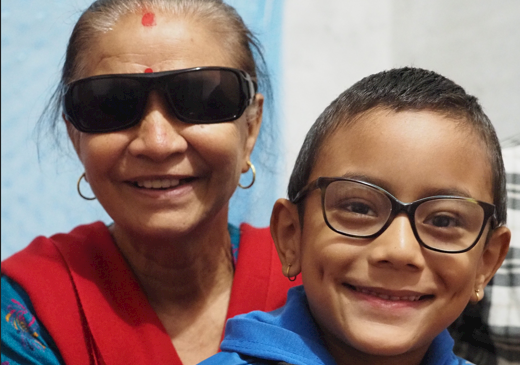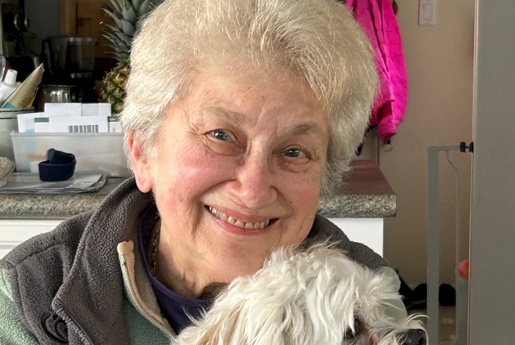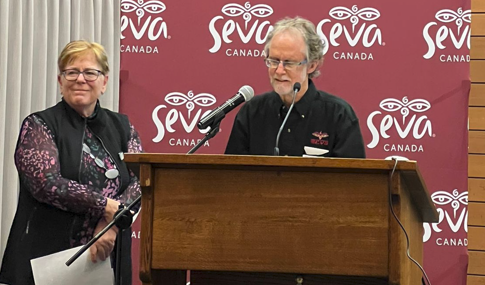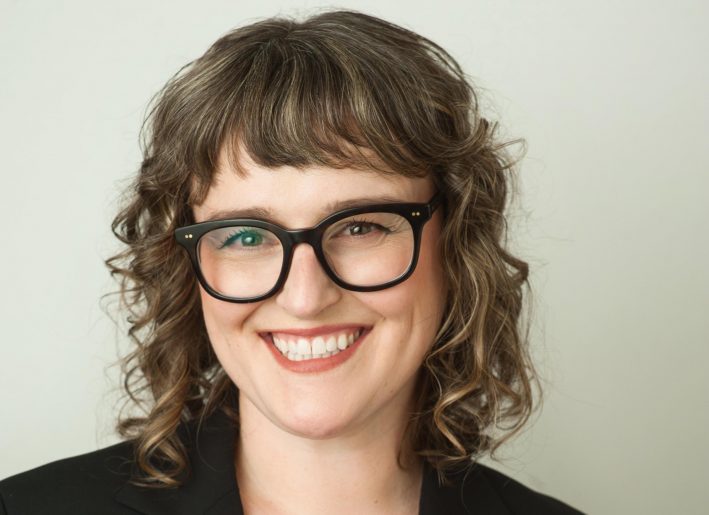Published in Wired on March 19, 2020
Photo by: Paul Zimmerman/Getty Images
Written by: Steven Levy
Epidemiologist Larry Brilliant, who warned of pandemic in 2006, says we can beat the novel coronavirus—but first, we need lots more testing.
LARRY BRILLIANT SAYS he doesn’t have a crystal ball. But 14 years ago, Brilliant, the epidemiologist who helped eradicate smallpox, spoke to a TED audience and described what the next pandemic would look like. At the time, it sounded almost too horrible to take seriously. “A billion people would get sick,” he said. “As many as 165 million people would die. There would be a global recession and depression, and the cost to our economy of $1 to $3 trillion would be far worse for everyone than merely 100 million people dying, because so many more people would lose their jobs and their health care benefits, that the consequences are almost unthinkable.”
Now the unthinkable is here, and Brilliant, the Chairman of the board of Ending Pandemics, is sharing expertise with those on the front lines. We are a long way from 100 million deaths due to the novel coronavirus, but it has turned our world upside down. Brilliant is trying not to say “I told you so” too often. But he did tell us so, not only in talks and writings, but as the senior technical advisor for the pandemic horror film Contagion, now a top streaming selection for the homebound. Besides working with the World Health Organization in the effort to end smallpox, Brilliant, who is now 75, has fought flu, polio, and blindness; once led Google’s nonprofit wing, Google.org; co-founded the conferencing system the Well; and has traveled with the Grateful Dead.
We talked by phone on Tuesday. At the time, President Donald Trump’s response to the crisis had started to change from “no worries at all” to finally taking more significant steps to stem the pandemic. Brilliant lives in one of the six Bay Area counties where residents were ordered to shelter in place. When we began the conversation, he’d just gotten off the phone with someone he described as high government official, who asked Brilliant “How the fuck did we get here?” I wanted to hear how we’ll get out of here. The conversation has been edited and condensed.
Steven Levy: I was in the room in 2006 when you gave that TED talk. Your wish was “Help Me Stop Pandemics.” You didn’t get your wish, did you?
Larry Brilliant: No, I didn’t get that wish at all, although the systems that I asked for have certainly been created and are being used. It’s very funny because we did a movie, Contagion—
We’re all watching that movie now.
People say Contagion is prescient. We just saw the science. The whole epidemiological community has been warning everybody for the past 10 or 15 years that it wasn’t a question of whether we were going to have a pandemic like this. It was simply when. It’s really hard to get people to listen. I mean, Trump pushed out the admiral on the National Security Council, who was the only person at that level who’s responsible for pandemic defense. With him went his entire downline of employees and staff and relationships. And then Trump removed the [early warning] funding for countries around the world.
I’ve heard you talk about the significance that this is a “novel” virus.
It doesn’t mean a fictitious virus. It’s not like a novel or a novella.
Too bad.
It means it’s new. That there is no human being in the world that has immunity as a result of having had it before. That means it’s capable of infecting 7.8 billion of our brothers and sisters.
Since it’s novel, we’re still learning about it. Do you believe that if someone gets it and recovers, that person thereafter has immunity?
So I don’t see anything in this virus, even though it’s novel, [that contradicts that]. There are cases where people think that they’ve gotten it again, [but] that’s more likely to be a test failure than it is an actual reinfection. But there’s going to be tens of millions of us or hundreds of millions of us or more who will get this virus before it’s all over, and with large numbers like that, almost anything where you ask “Does this happen?” can happen. That doesn’t mean that it is of public health or epidemiological importance.
Is this the worst outbreak you’ve ever seen?
It’s the most dangerous pandemic in our lifetime.
We are being asked to do things, certainly, that never happened in my lifetime—stay in the house, stay 6 feet away from other people, don’t go to group gatherings. Are we getting the right advice?
Well, as you reach me, I’m pretending that I’m in a meditation retreat, but I’m actually being semi-quarantined in Marin County. Yes, this is very good advice. But did we get good advice from the president of the United States for the first 12 weeks? No. All we got were lies. Saying it’s fake, by saying this is a Democratic hoax. There are still people today who believe that, to their detriment. Speaking as a public health person, this is the most irresponsible act of an elected official that I’ve ever witnessed in my lifetime. But what you’re hearing now [to self-isolate, close schools, cancel events] is right. Is it going to protect us completely? Is it going to make the world safe forever? No. It’s a great thing because we want to spread out the disease over time.
Flatten the curve.
By slowing it down or flattening it, we’re not going to decrease the total number of cases, we’re going to postpone many cases, until we get a vaccine—which we will, because there’s nothing in the virology that makes me frightened that we won’t get a vaccine in 12 to 18 months. Eventually, we will get to the epidemiologist gold ring.
What’s that?
That means, A, a large enough quantity of us have caught the disease and become immune. And B, we have a vaccine. The combination of A plus B is enough to create herd immunity, which is around 70 or 80 percent.
I hold out hope that we get an antiviral for Covid-19 that is curative, but in addition is prophylactic. It’s certainly unproven and it’s certainly controversial, and certainly a lot of people are not going to agree with me. But I offer as evidence two papers in 2005, one in Nature and one in Science. They both did mathematical modeling with influenza, to see whether saturation with just Tamiflu of an area around a case of influenza could stop the outbreak. And in both cases, it worked. I also offer as evidence the fact that at one point we thought HIV/AIDS was incurable and a death sentence. Then, some wonderful scientists discovered antiviral drugs, and we’ve learned that some of those drugs can be given prior to exposure and prevent the disease. Because of the intense interest in getting [Covid-19] conquered, we will put the scientific clout and money and resources behind finding antivirals that have prophylactic or preventive characteristics that can be used in addition to [vaccines].
When will we be able to leave the house and go back to work?
I have a very good retrospect-oscope, but what’s needed right now as a prospecto-scope. If this were a tennis match, I would say advantage virus right now. But there’s really good news from South Korea—they had less than 100 cases today. China had more cases imported than it had from continuous transmission from Wuhan today. The Chinese model will be very hard for us to follow. We’re not going to be locking people up in their apartments, boarding them up. But the South Korea model is one that we could follow. Unfortunately, it requires doing the proportionate number of tests that they did—they did well over a quarter of a million tests. In fact, by the time South Korea had done 200,000 tests, we had probably done less than 1,000.
Now that we’ve missed the opportunity for early testing, is it too late for testing to make a difference?
Absolutely not. Tests would make a measurable difference. We should be doing a stochastic process random probability sample of the country to find out where the hell the virus really is. Because we don’t know. Maybe Mississippi is reporting no cases because it’s not looking. How would they know? Zimbabwe reports zero cases because they don’t have testing capability, not because they don’t have the virus. We need something that looks like a home pregnancy test, that you can do at home.
If you were the president for one day, what would you say in the daily briefing?
I would begin the press conference by saying “Ladies and gentlemen, let me introduce you to Ron Klain—he was the Ebola czar [under President Barack Obama], and now I’ve called him back and made him Covid czar. Everything will be centralized under one person who has the respect of both the public health community and the political community.” We’re a divided country right now. Right now, Tony Fauci [head of the National Institute of Allergy and Infectious Diseases] is the closest that we come to that.
Are you scared?
I’m in the age group that has a one in seven mortality rate if I get it. If you’re not worried, you’re not paying attention. But I’m not scared. I firmly believe that the steps that we’re taking will extend the time that it takes for the virus to make the rounds. I think that, in turn, will increase the likelihood that we will have a vaccine or we will have a prophylactic antiviral in time to cut off, reduce, or truncate the spread. Everybody needs to remember: This is not a zombie apocalypse. It’s not a mass extinction event.
Should we be wearing masks?
The N95 mask itself is extremely wonderful. The pores in the mask are three microns wide. The virus is one micron wide. So you get people who say, well, it’s not going to work. But you try having three big, huge football players who are rushing for lunch through a door at lunchtime—they’re not going to get through. In the latest data I saw, the mask provided 5x protection. That’s really good. But we have to keep the hospitals going and we have to keep the health professionals able to come to work and be safe. So masks should go where they’re needed the most: in taking care of patients.
How will we know when we’re through this?
The world is not going to begin to look normal until three things have happened. One, we figure out whether the distribution of this virus looks like an iceberg, which is one-seventh above the water, or a pyramid, where we see everything. If we’re only seeing right now one-seventh of the actual disease because we’re not testing enough, and we’re just blind to it, then we’re in a world of hurt. Two, we have a treatment that works, a vaccine or antiviral. And three, maybe most important, we begin to see large numbers of people—in particular nurses, home health care providers, doctors, policemen, firemen, and teachers who have had the disease—are immune, and we have tested them to know that they are not infectious any longer. And we have a system that identifies them, either a concert wristband or a card with their photograph and some kind of a stamp on it. Then we can be comfortable sending our children back to school, because we know the teacher is not infectious.






